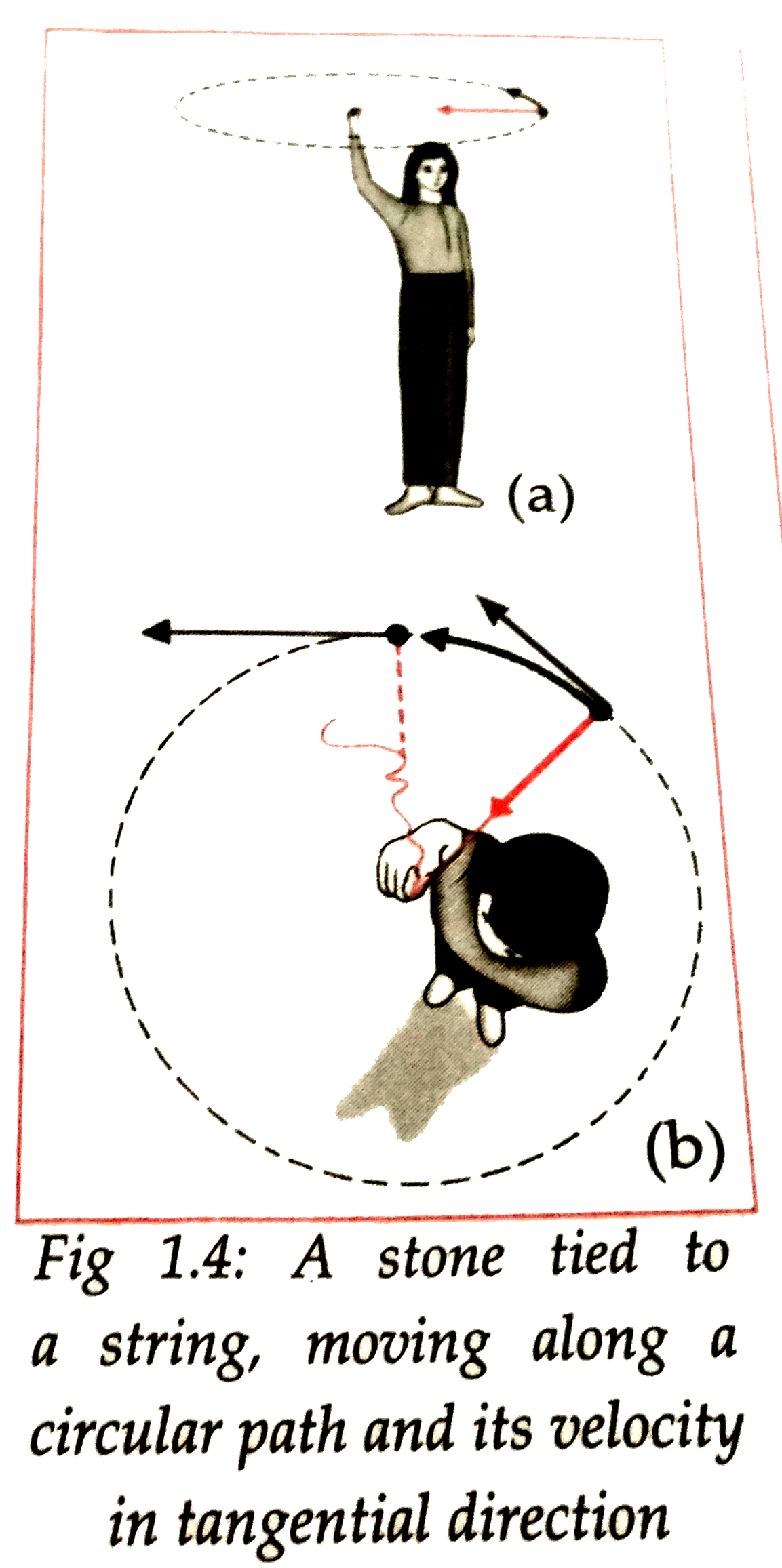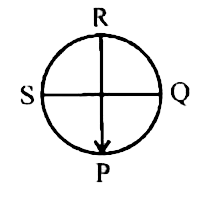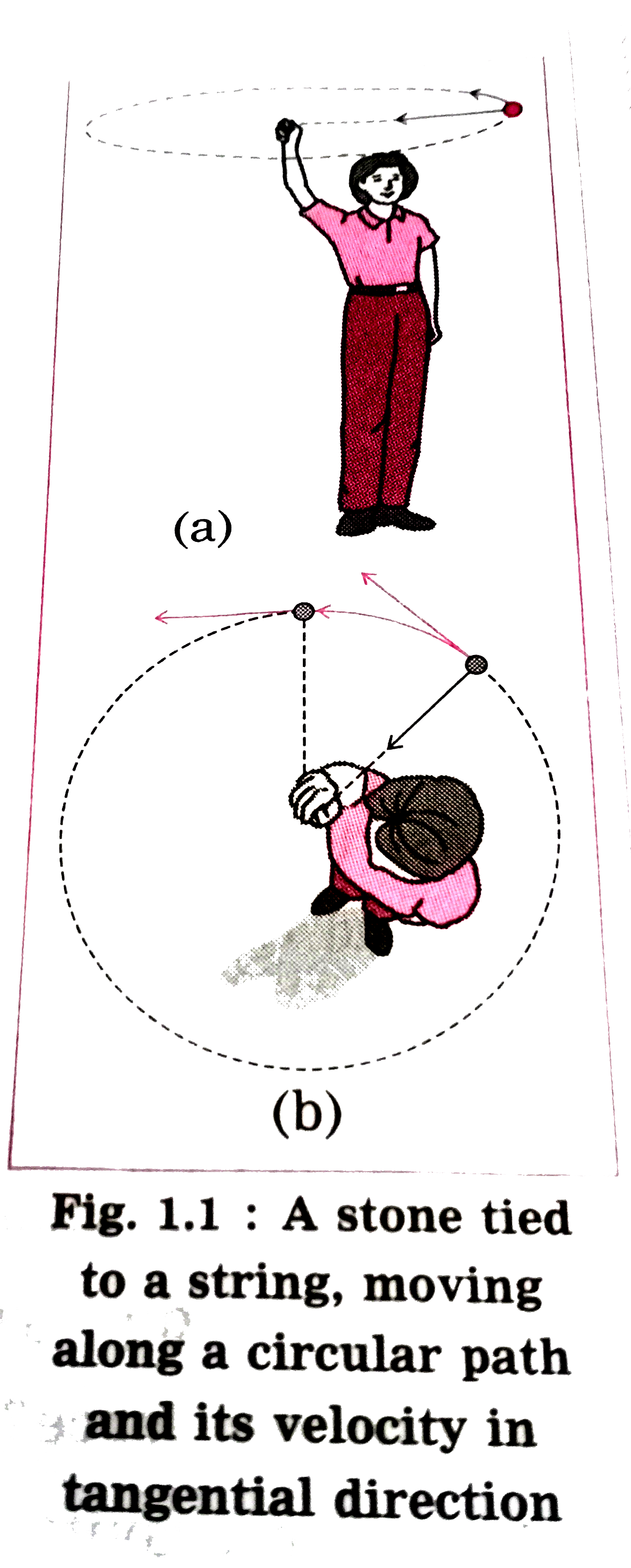Read the following paragraph carefully and answer the following:
Tie a stone to one end of a string. Take the other end in your hand and rotate the string so that the stone moves along a circle.
As long as we are holding the string, we are pulling the stone towards us i.e. towards the centre of the circle and are appliying a force towards it. The force stops acting on it if we release the string. In this case, the stone will fly off along a straight line which is the tangent to the circle at the position of the stone when the string is released, because that the directionn of its velocity at that instant of time. You may recall a similar activity in which a 5 rupee coin kept on a rotating circular disc flies off the disc along the tangent to the disc. Thus, a force acts on any object moving along a circle and it is directed towards the centre of the circle. This is called the Centripetal force.

What is centripetal force?Solution in Tamil
The force exerted towards the centre of the circle on an object moving along a circular path is called centripetal force. It is a centre seeking force.
Topper's Solved these Questions
- BOOK - CHETAN PUBLICATIONCHAPTER - GRAVITATIONEXERCISE - ASSIGNMENT-115videos
GRAVITATION
- BOOK - CHETAN PUBLICATIONCHAPTER - GRAVITATIONEXERCISE - PARAGRAPH BASED QUESTIONS:15videos
GRAVITATION
- BOOK - CHETAN PUBLICATIONCHAPTER - DISASTER MANAGEMENTEXERCISE - ASSIGMENT-1011videos
DISASTER MANAGEMENT
- BOOK - CHETAN PUBLICATIONCHAPTER - HEATEXERCISE - ASSIGNMENT - 5 (Answer the following: (Any 1))3videos
HEAT
Similar Questions
The value of g at the centre of the Earth is zero. Explain?
01:42View SolutionRead the paragraph and answer the following question:
You must be knowing about the high and low tides that occur regularly in the sea. The level of the sea water at any given location along sea shore increase and decreases twice a day at regular intervals. High and low tides occur at different times at places. The level of water in sea changes because of the gravitational force exerted by the moon. Water directly under the moon gets pulled towards the moon and the level of water there goes up causing high tide at that place. At two places on the earth at 90∘ from the place of high tide, the level of water is minimum and low tides occur there.
How many times the sea level at the coast change?04:33View SolutionFill in the blank:
Earthquake is .................. type of disaster.01:09View SolutionDefine: Latent heat of Vaporization .
03:25View SolutionA stone of mass m tied to a string of length l is rotated in a circle with the other end of the string as the centre. The speed of the stone is v. If the string breaks, the stone will move
01:33View SolutionTie a small piece of stone to one end of a string and whirl it in a circle with your hand The centripetal force required by the stone is being supplied by your hand through the string If the string breaks suddenly you observe that the stone flies off along the tangent to the circle at that instant . Read the above passage and answer the following questions: (i) Why does the stone fly off along the tangent to the circle at the instant the string breaks (ii) What lessons of life do you learn from this study ?
02:39View SolutionA stone of a mass m tied to a string of length /is rotated in a circle with the other end of the string as the centre. The speed of the stone is V. If the string breaks, the stone will
01:33View Solutionनगण्य द्रव्यमान का एक पत्थर एक डोरी के सिरे से बाँधकर क्षैतिज वृत्त में घुमाया जा रहा हैं । यदि डोरी टूट जाये तो पत्थर गति करेगा -
03:50View SolutionA stone tied to a string is rotated in a circle. If the string is cut, the stone flies away from the circle because
03:23View SolutionA stone tied at the end of sring is whirled in a circle. If the string break , the stone flies away tangentially . Why ?
05:59View SolutionA stone tied to a string is rotated in a circle. If the string is cut, the stone flies away from the circle because
07:27View SolutionA stone is attached to one end of a string and rotated in a vertical circle . If the string breaks at the position of maximum tension , then it will break at
 02:57View Solution
02:57View SolutionTia a stone to one end of a string. Take the other end in your hand and rotate the string so that the stone moves along a circle as shown in figure 1.1 (a). Are you applying any force on the stone? In which direction is this force acting ? How will you stop this force from acting ? What will be the effect on the stone ?
 View Solution
View SolutionRead the following paragraph carefully and answer the following: Tie a stone to one end of a string. Take the other end in your hand and rotate the string so that the stone moves along a circle. As long as we are holding the string, we are pulling the stone towards us i.e. towards the centre of the circle and are appliying a force towards it. The force stops acting on it if we release the string. In this case, the stone will fly off along a straight line which is the tangent to the circle at the position of the stone when the string is released, because that the directionn of its velocity at that instant of time. You may recall a similar activity in which a 5 rupee coin kept on a rotating circular disc flies off the disc along the tangent to the disc. Thus, a force acts on any object moving along a circle and it is directed towards the centre of the circle. This is called the Centripetal force. The impressed force on the same is in which direction?
01:50View SolutionRead the following paragraph carefully and answer the following: Tie a stone to one end of a string. Take the other end in your hand and rotate the string so that the stone moves along a circle. As long as we are holding the string, we are pulling the stone towards us i.e. towards the centre of the circle and are appliying a force towards it. The force stops acting on it if we release the string. In this case, the stone will fly off along a straight line which is the tangent to the circle at the position of the stone when the string is released, because that the directionn of its velocity at that instant of time. You may recall a similar activity in which a 5 rupee coin kept on a rotating circular disc flies off the disc along the tangent to the disc. Thus, a force acts on any object moving along a circle and it is directed towards the centre of the circle. This is called the Centripetal force. What happens if the string is released?
02:00View Solution

